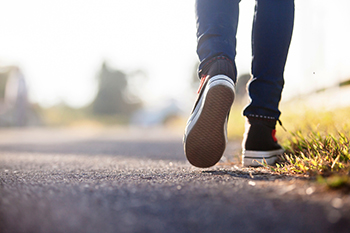 Lupus is a systemic autoimmune disease that causes the body’s immune system to attack its own otherwise healthy tissues and organs. Every individual who has lupus may be affected in different ways, but this condition often affects the joints, muscles, and bones of the feet and ankles. Lupus may cause joint pain and inflammation, leading to arthritis, tendonitis, and unusual looseness in the tendons. Lupus may also bring about myalgia, which is characterized by aches and pains in the muscles. Many patients with lupus develop osteoporosis or low bone density, which can make fractures more likely. If you have lupus and notice new aches, pains, or injuries to your lower limbs, it is suggested that you seek the care of a podiatrist, who can help manage the effects of lupus on your feet and ankles.
Lupus is a systemic autoimmune disease that causes the body’s immune system to attack its own otherwise healthy tissues and organs. Every individual who has lupus may be affected in different ways, but this condition often affects the joints, muscles, and bones of the feet and ankles. Lupus may cause joint pain and inflammation, leading to arthritis, tendonitis, and unusual looseness in the tendons. Lupus may also bring about myalgia, which is characterized by aches and pains in the muscles. Many patients with lupus develop osteoporosis or low bone density, which can make fractures more likely. If you have lupus and notice new aches, pains, or injuries to your lower limbs, it is suggested that you seek the care of a podiatrist, who can help manage the effects of lupus on your feet and ankles.
When dealing with systemic disease of the feet, it is extremely important to check the affected areas routinely so that any additional problems are caught quickly. If you have any concerns about your feet and ankles contact one of our podiatrists from Advanced Foot & Ankle Medical Center . Our doctors will assist you with all of your podiatric needs.
Systemic Diseases of the Feet
Systemic diseases affect the whole body, and symptoms usually are displayed in the feet. This condition can make a patient’s ability to walk unbearable. Systemic diseases include gout, diabetes mellitus, neurological disorders, and arthritis.
Gout – is caused by an excess of uric acid in the body. Common symptoms include pain, inflammation, and redness at the metatarsal/phalangeal joint of the base big toe. Gout can be treated by NSAIDs to relieve pain and inflammation, and other drugs that lower the acid levels in the body.
Diabetes mellitus – is an increase in the level of blood sugar that the body cannot counteract with its own insulin. Failure to produce enough insulin is a factor in Diabetes.
Diabetes of the Feet
Diabetic Neuropathy – may lead to damaged nerves and affect the feet through numbness and loss of sensation.
Peripheral Vascular Disease – can restrict the blood flow to the feet, and often times lead to amputation of the feet.
If you have any questions please feel free to contact our office located in Thousand Oaks, CA . We offer the newest diagnostic and treatment technologies for all your foot and ankle needs.





